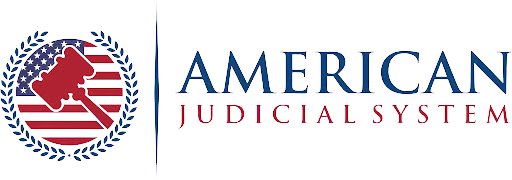Stepping away from work for maternity leave is an important milestone. You’ll want to leave a professional, clear, and thoughtful out-of-office message that protects your time, honors your colleagues, and keeps business moving smoothly.
In this post, you’ll learn exactly how to craft that message — including what details to include and avoid, sample templates you can adapt, and tips to personalize it for your U.S. work environment.
Why Your Maternity Leave Out-of-Office Message Matters
When you’re preparing to go on leave, your automatic reply isn’t just a quick email setup. It serves as a communication lifeline to your colleagues, clients, and vendors. It signals that:
- You’ll be unavailable and set the expectation of no immediate responses.
- It points people to the correct contacts and avenues in your absence.
- It preserves your professional image and maintains consistency in your workplace.
- It reduces the chance of miscommunication or someone repeatedly emailing you assuming you’re still on.
Recent data shows that one of the most frequent oversights is not sharing who will handle matters while you’re away or not being clear about whether you’ll check email.
Key Elements to Include in Your Message
To craft a clean, effective reply, your message should include three core elements:
- Your status and expected return date
People need to know you’re on leave. You can say “maternity leave” or choose broader language like “parental leave” if your organization prefers inclusive wording. Use an estimated return date or timeframe. For instance: “I anticipate returning the week of July 15, 2025.” Use “expected” or “anticipated” if you’re not certain. - Alternative contact(s) during your absence
List one or more colleagues, their titles, and their email addresses or phone numbers. This helps prevent delays and confusion. Provide appropriate contacts for major tasks or inquiries. - Your email-access level
Be clear whether you will or will not be checking email. If you will not check it at all, say so. If you will check periodically, clarify the frequency. This helps set boundaries and prevents assumptions.
How to Phrase It Clearly and Professionally
Aim for short sentences, clear structure, and a professional yet warm tone. Avoid oversharing personal details unless your workplace culture welcomes it. For example:
Hello,
Thank you for your email. I am currently out of the office on maternity leave and expect to return on August 25, 2025. During my absence I will not be checking email.
For urgent matters regarding [Project/Account Name], please contact [Name, Title] at [Email/Phone].
For all other inquiries please reach out to [Name/Title] at [Email/Phone].
Thank you for your understanding, and I look forward to reconnecting upon my return.
Best regards,
[Your Name]
You may tailor this to your style or include a brief note of gratitude: “I appreciate your understanding as I enjoy this special time with my family.”
When to Set It Up and How to Customize
Set up your automatic reply a few days before your leave begins. That gives the system time to activate, and prevents last-minute scrambling. Customize your message based on:
- Your industry tone (corporate vs creative)
- Whether you will fully disconnect or will check in occasionally
- How many people will need coverage and how complex your role is
- Internal team culture: a slightly more personable tone may be fine for internal emails, and a more formal tone for external contacts
Sample Templates You Can Adapt
Here are a few sample messages you can use as starting points:
Professional and succinct
Thank you for your message. I am currently on maternity leave and expect to return on September 1, 2025. Until then I will not be monitoring email. For urgent assistance, please contact [Colleague Name] at [Email/Phone]. I will reply upon my return.
Friendly and inclusive
Hi there! I’m on parental leave, welcoming our newest family member and anticipating a return to the office on October 10, 2025. If you need immediate help, please reach out to [Colleague Name] at [Email]. For everything else I’ll respond when I’m back. Thanks for your patience!
Minimal and fully disconnected
Hello. I am out of the office on maternity leave until November 2025. I won’t be checking email during this time. Please contact [Team/Department Email] for assistance. Thank you for your understanding!
Tips for Polishing Your Message
- Keep it short and straightforward — avoid long paragraphs and personal stories.
- Use the word “anticipated” or “expected” if you’re not certain of your return date.
- Make sure the contact information is accurate and tested.
- Save a draft and schedule your out-of-office message ahead of time.
- Review it on the device you’ll set it up on (mobile vs desktop) to ensure formatting looks clean.
- If appropriate, think about a voicemail greeting that mirrors this message.
Common Mistakes to Avoid
- Not including any alternate contact information (leaves sender unsure what to do).
- Giving personal details irrelevant to a professional auto-reply (e.g., birth weight).
- Saying you’ll “check email regularly” if you really won’t — that creates false expectations.
- Forgetting to update the message if your return date changes.
- Making it too lengthy — people appreciate clarity and brevity.
Finalizing the Message Before Your Leave
As you approach your maternity leave, take a few minutes to:
- Confirm the correct contact person(s) and ensure they’re aware of their role.
- Ensure your vacation/leave setting is scheduled for your start date.
- Remove any signatures or disclaimers that reference you by title in a way that might cause confusion while you’re gone.
- Inform your direct team and supervisor of the message so they can manage expectations.
- Double-check your auto-reply is active and working as expected on your email client.
Conclusion
Your out-of-office message for maternity leave is a strategic piece of communication. It ensures business continuity, protects your personal time, and maintains your professionalism. Use the three core elements — status and return date, alternate contacts, and email-access level.
Keep the tone clean, helpful, and tailored to your U.S. workplace environment. With a well-crafted message, you can fully embrace your leave with peace of mind and return to work confidently.










